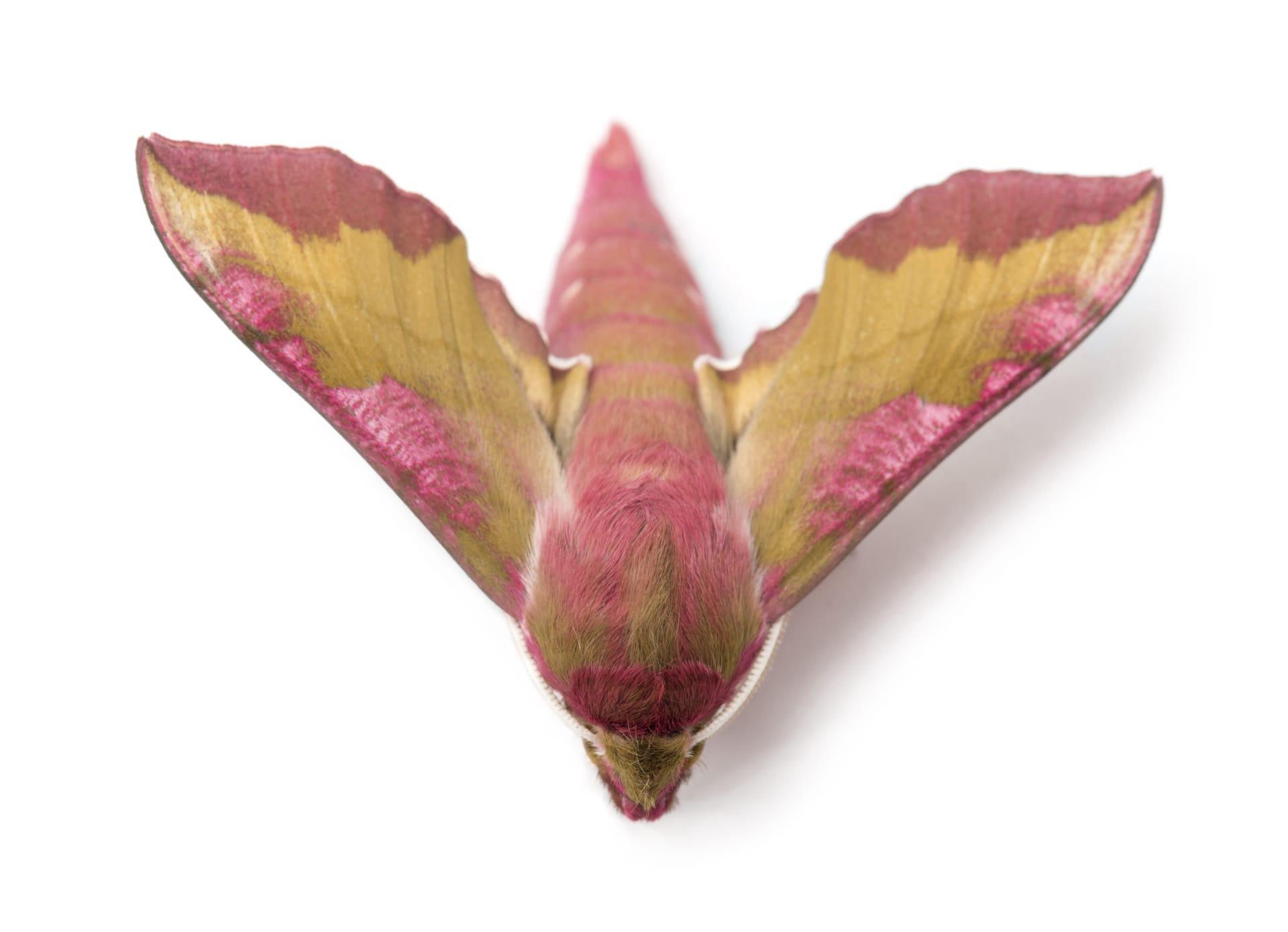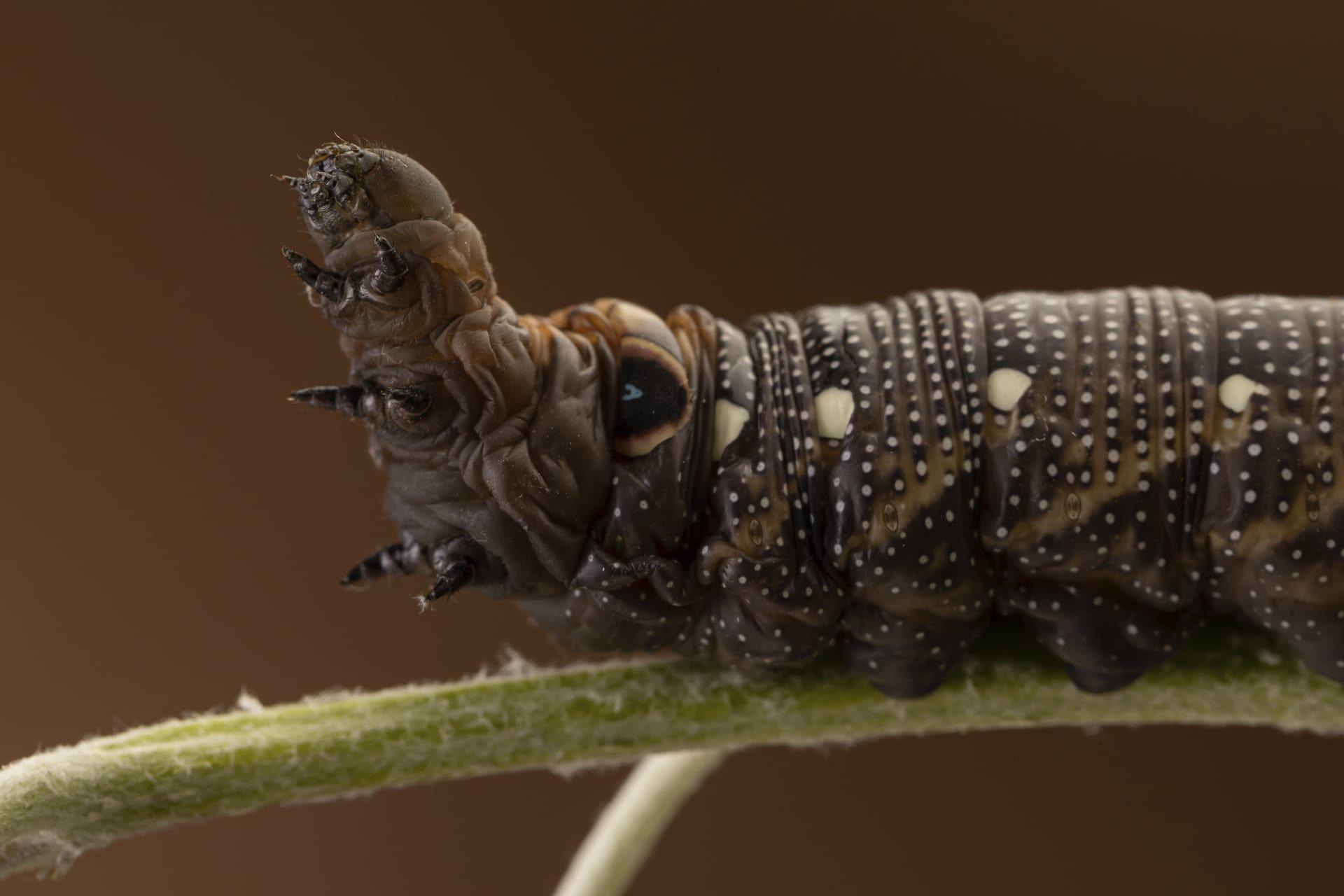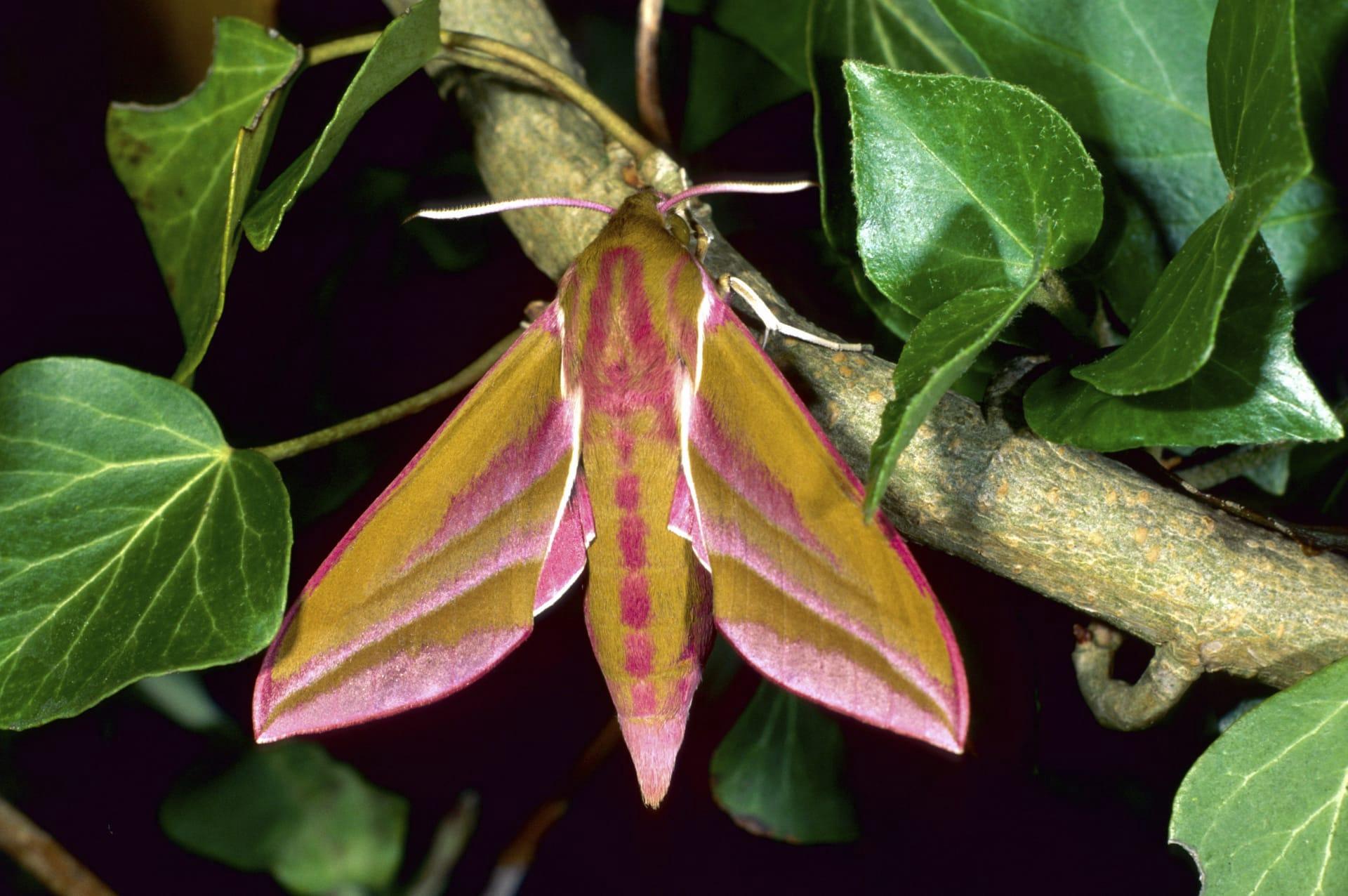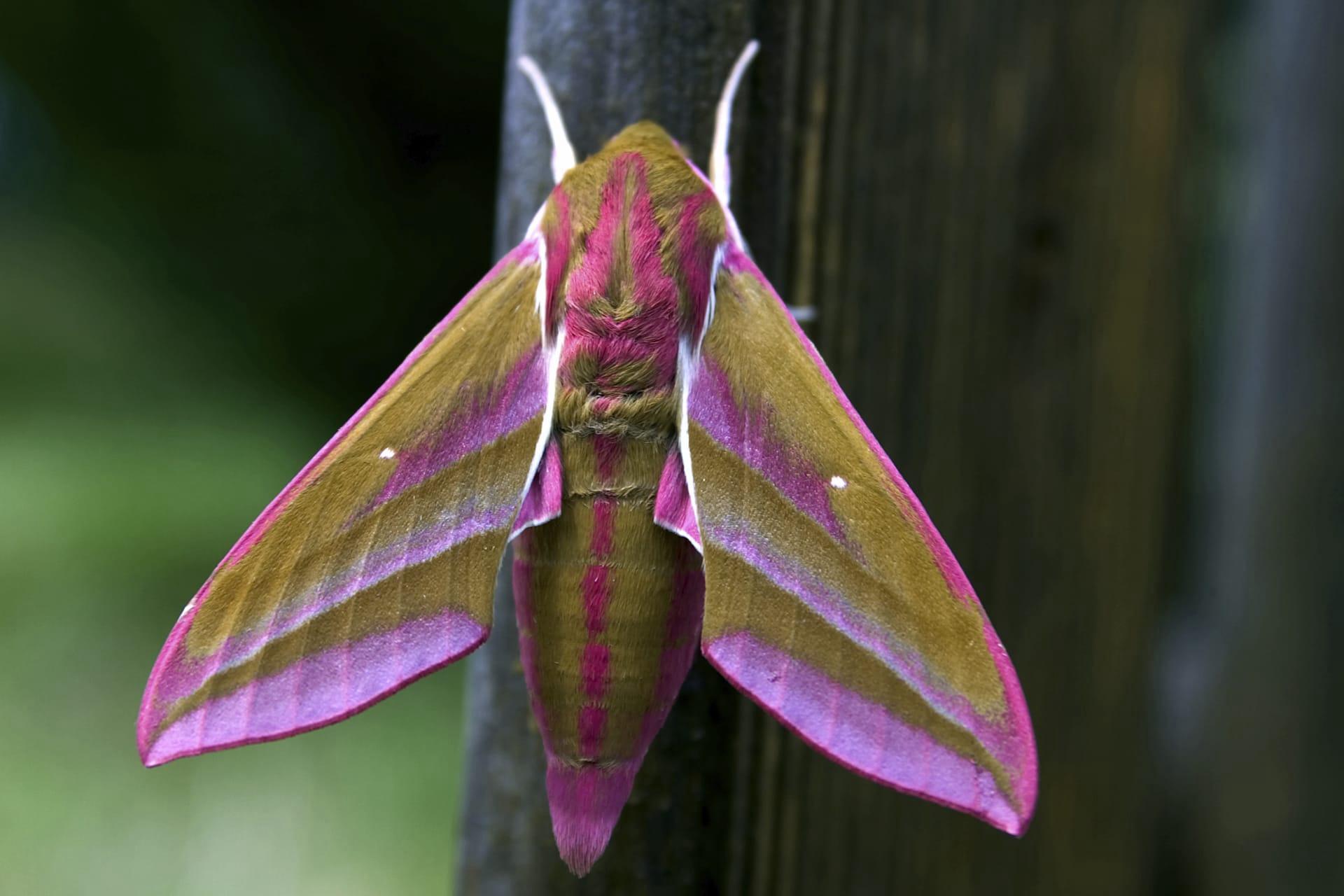1
The Elephant Hawk Moth, scientifically known as Deilephila elpenor, showcases a stunning color palette. Its wings are a blend of olive-brown and pink, creating a vibrant contrast that's not just for show. This coloration plays a critical role in predator deterrence. When threatened, the moth flashes its wings, revealing the bright colors to startle predators and gain a chance to escape. This survival tactic is a brilliant example of how nature uses color for more than mere beauty.
Another fascinating aspect of the Elephant Hawk Moth is its caterpillar, which has a unique defense mechanism. The caterpillar's appearance resembles an elephant's trunk, which is where its name originates. When feeling threatened, it inflates segments near its head, mimicking a snake's head to scare off predators. This form of mimicry is not only visually effective but also aids in its survival, as many predators avoid snakes.

2
Regarding habitat, the Elephant Hawk Moth is quite adaptable. It's found in a variety of environments, ranging from gardens to open countryside across Britain, Europe, and parts of Asia. This wide distribution is due to its non-specific nature in terms of habitat requirements, allowing it to thrive in various settings. The moth's ability to inhabit diverse landscapes demonstrates its remarkable adaptability and resilience in the face of environmental changes.
The feeding habits of this moth are also noteworthy. During its larval stage, the Elephant Hawk Moth caterpillar feeds primarily on willowherbs and bedstraws, which are common in its habitats. What's intriguing is its feeding pattern at night as an adult moth. It has a long proboscis, enabling it to feed on nectar from deep within flowers like honeysuckle. This specialized feeding adaptation not only benefits the moth but also contributes to pollination, making it an essential player in its ecosystem.

3
The life cycle of the Elephant Hawk Moth is a marvel of nature. It undergoes complete metamorphosis, transforming dramatically from egg to larva (caterpillar), then to a pupa, and finally emerging as an adult moth. This process, which spans several weeks, illustrates the incredible transformation capabilities of Lepidoptera. The metamorphosis is a critical period for the species, involving significant physiological changes that prepare it for its adult life.
In the adult stage, the Elephant Hawk Moth exhibits an extraordinary flying ability. Its wing structure and muscle strength allow for rapid and agile flight, similar to that of a hummingbird. This capability is especially evident during feeding, as it hovers in front of flowers, sipping nectar. This hummingbird-like flight is not only a spectacle to witness but also demonstrates the moth's specialized adaptation for survival and feeding.

4
Temperature plays a crucial role in the development of Elephant Hawk Moth eggs. Studies have shown that higher temperatures can accelerate the hatching process. Typically, the eggs hatch within a week, but in warmer conditions, this period can shorten, demonstrating the moth's sensitivity and adaptability to environmental temperature variations.
The Elephant Hawk Moth's pupa stage is equally fascinating. The pupa, or chrysalis, stage can last for several weeks, even months, depending on environmental conditions. During this time, the organism undergoes significant internal restructuring. The pupa's ability to overwinter, surviving in a dormant state during colder months, showcases an incredible adaptation for enduring varied climatic conditions.

5
Another intriguing fact about the Elephant Hawk Moth is its eyes. Like many moths, it possesses large, complex eyes that are highly sensitive to light. This adaptation is crucial for its nocturnal lifestyle, aiding in navigation and finding food in the dark. The moth's eyes can detect a wide range of light intensities, allowing it to see well even in low-light conditions, which is essential for its survival and nightly activities.
The Elephant Hawk Moth also plays a significant role in ecological research. Due to its distinct coloration and widespread habitat, it has become a subject of various studies focusing on insect behavior, habitat preference, and climate change effects. Research on this species contributes to a broader understanding of environmental impacts on insect populations, highlighting its importance beyond its ecological role.